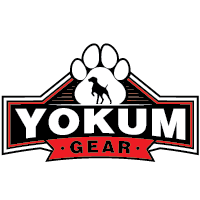One of the most important accessories for any dog owner is a lead leash. Not only is a leash crucial for safety, both for your furry friend and for those around you, but it also plays a significant role in your dog's training and comfort. With so many different types of leashes available on the market, selecting the right one can be quite a challenge. This guide aims to help you make an informed decision by exploring the various factors to consider when choosing a lead leash for your dog.
Types of Lead Leashes
There are several types of lead leashes, each designed for different purposes and dog behaviors. Understanding the various kinds can help you determine which is best suited for your needs.
- Standard Leash: Usually 4 to 6 feet in length, standard leashes are ideal for everyday walking. They provide the right balance between freedom and control.
- Retractable Leash: This leash allows your dog to roam farther, often extending up to 30 feet. However, they require careful use as they can pose risks such as tangling or sudden pulling.
- Adjustable Leash: Featuring multiple loops or clips, adjustable leashes offer the flexibility to change the length as needed.
- Martingale Leash: Combining a collar and leash into one, this type tightens slightly when the dog pulls, providing better control without choking.
- Hands-Free Leash: Perfect for jogging or hiking, this leash can be attached around your waist, allowing your hands to remain free.
- Chain Leash: Made from metal links, chain leashes are durable and chew-resistant, making them suitable for dogs that tend to chew on their leashes.
Material Matters
The material of the leash significantly impacts its durability, comfort, and functionality. Here are some common materials used in leashes:
- Nylon: Durable, lightweight, and affordable, nylon leashes are popular but may cause friction burns if your dog is a strong puller.
- Leather: Known for its strength and comfort, leather leashes soften over time and become more pliable. They are often more expensive but are long-lasting.
- Cotton: Cotton leashes are soft and comfortable for both the dog and the owner but may not be as durable as nylon or leather.
- Chain: Made from metal links, chain leashes are ideal for dogs that chew or pull excessively but can be heavy and may not be comfortable for all dogs.
Length and Width
The length and width of the leash can affect both control and comfort. A shorter leash, typically between 4 to 6 feet, gives you more control and is ideal for crowded or high-traffic areas. Longer leashes, over 6 feet, provide more freedom, making them suitable for training or open spaces.
Width is also a factor to consider. Wider leashes are stronger and more durable, making them better suited for larger or more powerful dogs. Conversely, narrower leashes are lighter and more suitable for smaller or less energetic dogs.
Special Features
Modern lead leashes come with an array of special features designed to enhance safety and convenience:
- Reflective Strips: Perfect for nighttime walks, reflective strips enhance visibility, keeping you and your dog safe.
- Padded Handles: A padded handle provides added comfort for the owner, reducing the strain on your hands during long walks.
- Waste Bag Holders: Some leashes come with attached waste bag holders, making it convenient to clean up after your dog.
- Traffic Handles: A secondary handle closer to the collar provides extra control in high-traffic situations, enhancing safety.
Consider Your Dog's Personality and Training Needs
Your dog's temperament and training requirements should significantly influence your choice of leash. For instance, a retractable leash might be suitable for a well-behaved dog that enjoys exploring, but it may exacerbate poor leash manners in an untrained dog. Conversely, a standard leash or a martingale leash can aid in training a dog to walk properly without pulling.
Conclusion
Choosing the right lead leash for your dog is a decision that should be made with careful consideration of your dog's size, behavior, and your own practical needs. Whether you opt for a durable leather leash, a versatile adjustable leash, or a hands-free option for your outdoor adventures, the right leash can enhance your walking experience and provide a safer, more enjoyable outing for both you and your furry friend. Take the time to evaluate the options and select the best leash that suits both your lifestyle and your dog's personality.

